Retro Replay Review
Gameplay
Fire Emblem: The Sacred Stones delivers a rich tactical experience that feels both familiar to series veterans and accessible to newcomers. Battles unfold on grid-based maps where positioning, terrain, and unit variety all play pivotal roles. You’ll command a diverse roster of knights, archers, thieves, and mages as you navigate forests, forts, and choke points, making every move a careful deliberation.
(HEY YOU!! We hope you enjoy! We try not to run ads. So basically, this is a very expensive hobby running this site. Please consider joining us for updates, forums, and more. Network w/ us to make some cash or friends while retro gaming, and you can win some free retro games for posting. Okay, carry on 👍)
The weapon triangle—swords besting axes, axes besting lances, and lances besting swords—remains a core strategic pillar, encouraging you to constantly assess matchups. Magic adds another layer, with anima, light, and dark spells each countering a specific type. This system keeps skirmishes fresh, as choosing the right attacker can turn the tide in moments.
Experience points are awarded for combat actions, and upon reaching level 10, units can promote into advanced classes such as paladins, wyvern riders, or great knights. These promotions not only boost stats but often unlock powerful skills and unique weapons, giving you an incentive to shepherd each character through their growth arc. Because fallen units are gone for good, many players find themselves reinvesting in low-level soldiers to fill gaps caused by permanent losses.
Beyond the battlefield, The Sacred Stones introduces a light exploration layer via an overworld map. You can visit towns to trade, houses to gather hints, and secret sites to engage in skirmishes or recruit neutral units. This adds a sense of freedom and replayability, as you decide which detours to undertake and which optional battles to conquer before the next major engagement.
Graphics
On the Game Boy Advance hardware, The Sacred Stones achieves a level of visual clarity often unmatched in its generation. Character sprites are distinct and expressive, making it easy to tell a knight from a myrmidon at a glance. Battle animations—though economical—are satisfying, with swords clashing and spells erupting in vibrant hues.
Map tiles are color-coded and richly detailed, ranging from lush forests to snow-tipped mountains. Terrain effects not only look good but convey important tactical information: forests grant evasion bonuses and forts offer defensive boosts. The UI is clean and intuitive, with menus and icons that feel polished rather than cramped, even on a small screen.
Cutscenes and character portraits break up the tactical gameplay with narrative flair. While these illustrations are rendered in sprite and pixel art, they capture character personalities through subtle details—Ephraim’s steely gaze, Erika’s determined smile. These moments lend weight to key story beats.
Though the resolution and color depth are limited by the GBA’s capabilities, the art direction and sprite work combine to create a cohesive aesthetic that remains charming decades later. Fans often cite The Sacred Stones as one of the best-looking titles on the platform, and it still holds up when compared to newer handheld releases.
Story
The Sacred Stones opens with an intriguing premise: the continent of Magvel, once saved from the Demon King by the sacred stones, has enjoyed 800 years of peace. That tranquility shatters when the aggressive Grado Empire invades Renais, thrusting Prince Ephraim and Princess Erika into a desperate flight for survival. From the outset, you feel the weight of history and the scale of the conflict.
The choice to experience the tale from both Ephraim’s and Erika’s perspectives adds depth and variety. Ephraim’s path is a straightforward push to reclaim lost territories, emphasizing large-scale warfare and tactical mastery. Meanwhile, Erika’s route focuses on stealth, diplomacy, and surprise skirmishes behind enemy lines. These parallel narratives intersect in meaningful ways, fleshing out the broader war effort.
The supporting cast is equally memorable, featuring loyal knights, mischievous thieves, studious mages, and nameless villagers eager to serve your cause. Each character comes with personal motivations, banter lines, and support conversations that develop relationships. These interludes help you invest emotionally in your units, making the permanent-death mechanic all the more impactful.
While the overarching storyline adheres to classic Fire Emblem themes—betrayal, sacrifice, and redemption—it also introduces surprising plot twists and lore reveals around the sacred stones themselves. As secrets emerge, the narrative stakes rise, culminating in a finale that ties personal journeys to the fate of Magvel with satisfying resonance.
Overall Experience
Fire Emblem: The Sacred Stones excels at blending strategic depth with an emotionally engaging storyline. Battles demand careful planning, yet occasional optional skirmishes allow you to experiment with different party compositions and tactics. The permanent-death mechanic ensures that every decision carries weight, fostering a sense of achievement when a hard-fought victory is secured.
The dual-protagonist structure offers notable replay value, encouraging you to revisit missions with fresh eyes. Combined with the overworld exploration and optional recruitment of neutral units, the game feels generous without overstaying its welcome. Whether you’re grinding for levels or racing against the clock, there’s always a new twist around the corner.
Graphically and musically, The Sacred Stones remains a standout on the GBA. Its art style and soundtrack blend seamlessly to create an immersive fantasy world, while character portraits and animations add personality to each encounter. The balance between visual flair and functional design ensures clarity during intense tactical exchanges.
For both series newcomers and longtime fans, Fire Emblem: The Sacred Stones offers a compelling journey. Its approachable mechanics make it an excellent entry point, while its strategic complexity and narrative depth will satisfy veteran tacticians. Whether you’re drawn by the rich lore, the memorable characters, or the addictive turn-based combat, this title stands as a high-water mark for portable strategy RPGs.
 Retro Replay Retro Replay gaming reviews, news, emulation, geek stuff and more!
Retro Replay Retro Replay gaming reviews, news, emulation, geek stuff and more!

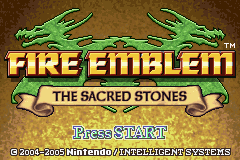
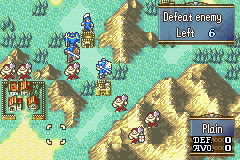
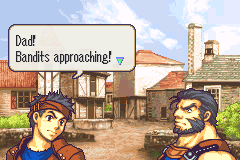
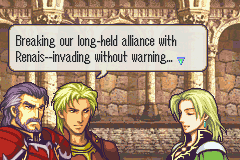
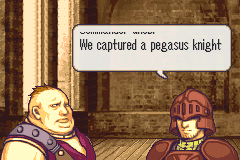



Reviews
There are no reviews yet.